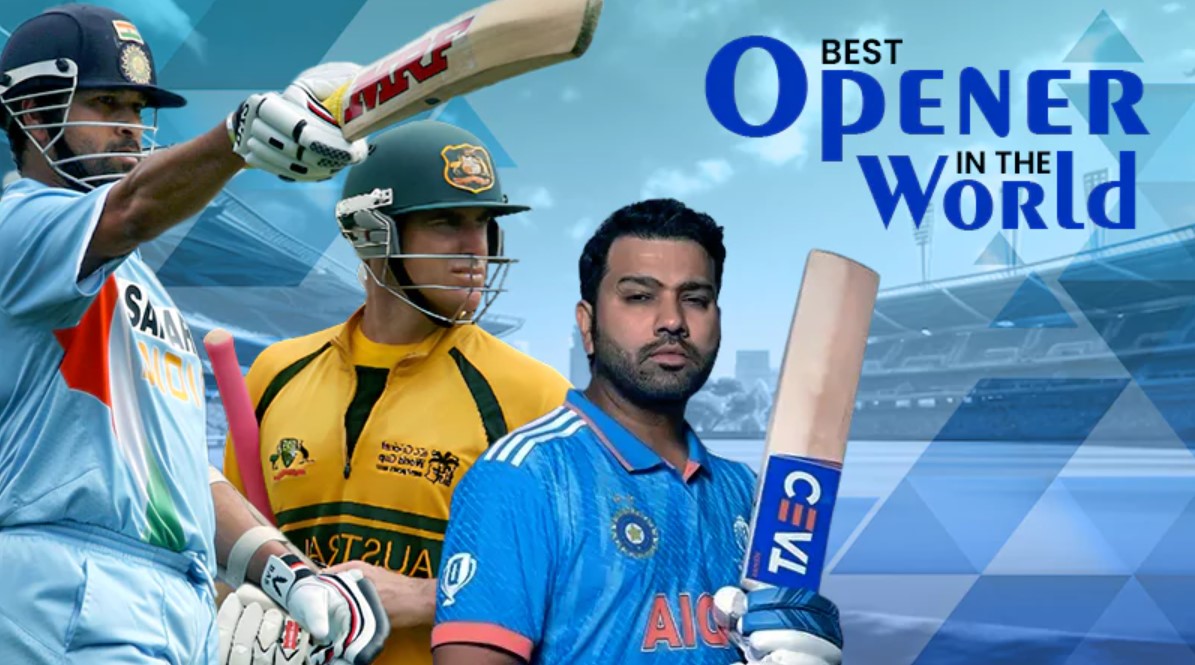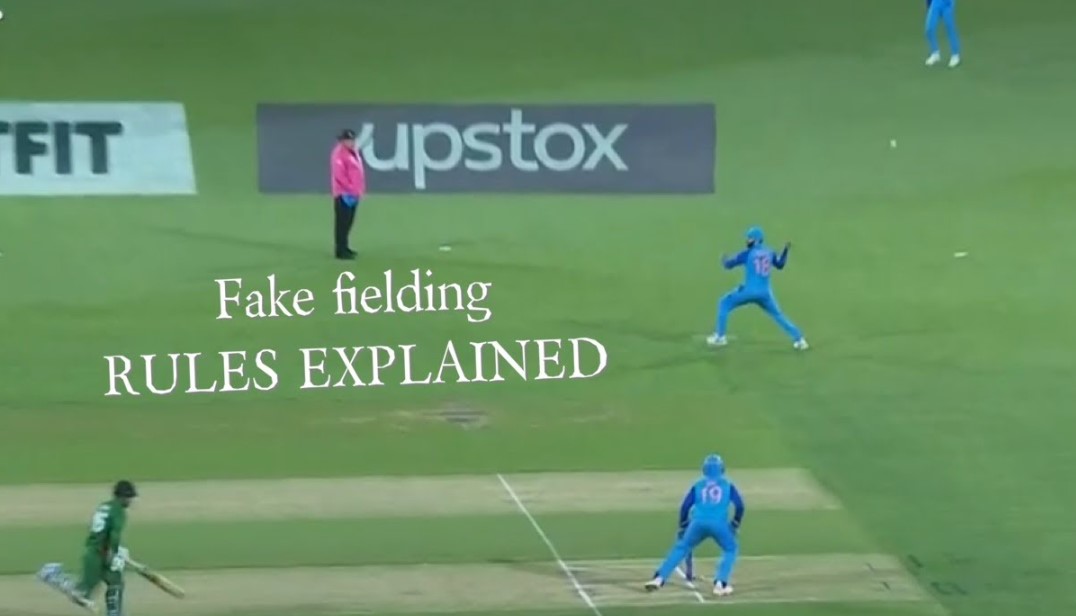How Many Players are there in a Cricket Team
Cricket, a sport celebrated by millions across the globe, is a captivating and intricate game with its own set of rules and intricacies. At its core, cricket is a team sport that features eleven players on each side. These players, each with their specific roles and responsibilities, come together to create a cohesive and competitive team.
In a cricket team, you’ll find a mix of talents, including batsmen, bowlers, all-rounders, and a wicket-keeper. Batsmen are tasked with scoring runs and protecting their wickets, while bowlers aim to dismiss the opposition’s batsmen and restrict the runs scored. All-rounders are versatile players who excel in both batting and bowling, adding depth to the team’s lineup. The wicket-keeper is a specialist in collecting deliveries, executing stumpings, and initiating run-outs behind the stumps.
As the game unfolds, fielders are strategically positioned to prevent the opposition from scoring runs, making every aspect of cricket a dynamic and tactical battle. Additionally, cricket teams often have substitute players and reserves who can step in due to injuries or tactical decisions, ensuring that the team remains competitive throughout the match.
The balance of these players on the field is crucial to a team’s success, making cricket a sport that requires not only individual skill but also teamwork, strategy, and coordination. So, next time you watch a game of cricket, appreciate the intricate ballet of these eleven players as they strive to outperform their opponents within the defined overs. And how many dancers perform this ballet, you might wonder?

How many players in a cricket team
In the game of cricket, the number 11 represents more than just a count of players on the field; it signifies a carefully balanced ensemble of skills and roles. Let’s delve into the intricacies of this composition.
A standard cricket team comprises a combination of batsmen, bowlers, and all-rounders. Among these, there are specialist batsmen known for their prowess in scoring runs, bowlers who excel at taking wickets, and all-rounders who can contribute both with the bat and the ball. The captain of the team plays a pivotal role in deciding the batting and bowling order, making strategic field placements, and steering the team’s performance.
The choice of players in the team can be influenced by various factors, including pitch conditions, weather, and the opposition’s strengths and weaknesses. Teams often adapt their line-up to exploit these factors to their advantage. For instance, in spin-friendly conditions, teams may opt for more spinners, while on a pace-friendly pitch, fast bowlers may dominate the line-up.
Moreover, the format of the cricket match also plays a significant role in determining the composition of the team. In Test matches, which can span up to five days, the team typically includes more specialist bowlers and batsmen. In One-Day Internationals (ODIs), teams aim for a balance of skills, while in Twenty20 (T20) matches, where quick runs and tight bowling are paramount, the team may favor aggressive batsmen and specialist T20 bowlers.
In conclusion, the number 11 in a cricket team is not just a fixed count; it represents the dynamic synergy of diverse skills, strategies, and adaptability. The composition of the team evolves with the format of the match, playing conditions, and team objectives, making cricket a sport where the selection of those 11 players is a critical aspect of the game’s complexity.

The composition of a cricket team
Creating a balanced cricket team is like solving a complex puzzle. Each piece, each player, has a role to play, and the success of the team often hinges on how well these pieces fit together. The composition of a cricket team usually involves specialist batsmen, bowlers, all-rounders, and a wicketkeeper. However, how these roles are distributed can greatly vary based on the team’s strategies and the game’s conditions. Let’s dive deeper into cricket world.
Batsmen in a cricket team
Generally, a team comprises 5-6 specialist batsmen. They can be opening batsmen, middle-order batsmen, or tailenders, each having a distinct role to play. Opening batsmen need to be sturdy and patient, tasked with seeing off the new ball’s threat and laying a solid foundation. The middle order must maintain the momentum set by the openers or rebuild the innings if early wickets fall. Tailenders, who come in at the end, are often not skilled batsmen, but any runs they can contribute can make a significant difference.
Isn’t it fascinating how different roles within a single category of players can change the course of the game?
Bowlers in a cricket team
Similarly, 4-5 bowlers form an integral part of a cricket team. There are different types of bowlers: fast, medium-pace, spin, each with their unique styles and roles. Fast bowlers use speed and aggression to unsettle the batsman, while spinners use guile and variations to trick the batsman. Medium-pace bowlers bring balance, often able to swing the ball both ways, creating uncertainty in the batsman’s mind.
Just like a chef uses different ingredients to create a perfect dish, a captain uses his bowlers strategically to tackle different situations.
All-Rounders in a cricket team
All-rounders, the players who contribute with both bat and ball, are a precious commodity in cricket. Typically, a team may have 1-2 all-rounders. These players can switch roles depending on the situation, providing their team with increased flexibility. Their ability to perform dual roles effectively can often swing the balance in their team’s favor.
Imagine having a Swiss army knife during a camping trip. That’s what an all-rounder brings to a cricket team – a multi-purpose tool that can adapt as per the needs.

Wicketkeepers in a cricket team
Lastly, there’s the wicketkeeper, a unique role in the cricket team. The wicketkeeper is the team’s backbone, guarding the wickets, catching balls that slip past the batsman, and making vital dismissals like run-outs and stumpings. Some wicketkeepers are also excellent batsmen, adding depth to the team’s batting lineup.
Just like a conductor in an orchestra ensuring every instrument plays its part perfectly, the wicketkeeper coordinates the fielding side, making sure every chance is utilized.
The role of the extra players or substitutes
In the realm of cricket, substitutes or extra players are the silent guardians of a team’s integrity and functionality. While their roles might appear secondary, they play a pivotal part in the smooth execution of the game.
Their primary function, stepping onto the field when a playing member is unable to continue, underscores their significance. When an injury strikes, or illness befalls a teammate, substitutes become the understudies who must seamlessly step into the spotlight. In this moment, they inherit the responsibilities of their injured comrades, striving to maintain the team’s competitive edge.
However, the contribution of substitutes transcends moments of crisis. They are the logistical support crew for the on-field players, akin to pit crews in motorsports. Whether it’s delivering hydration to parched athletes during sweltering matches, transmitting tactical insights from the coach, or providing fresh equipment when needed, substitutes ensure that the machinery of the team runs smoothly.
In essence, substitutes embody the team spirit that cricket celebrates. They stand ready, both in the wings and on the field, to uphold the team’s commitment to excellence. While their moments in the limelight may be fleeting, their unwavering dedication and preparedness are constants that allow the show to go on, smoothly and harmoniously. Just like the unsung heroes in any ensemble, substitutes are an indispensable part of cricket’s grand performance.

Notable exceptions in cricket team composition
In the dynamic and diverse world of cricket, exceptions to the standard team composition continue to emerge, adding depth and excitement to the game. These exceptions often challenge conventions and lead to captivating narratives that both fans and analysts relish. Let’s delve into some of these noteworthy exceptions when it comes to the composition of a cricket team.
Extraordinary All-Rounder dominance
The West Indies team of the 1980s, often regarded as one of the most dominant cricket teams in history, redefined the concept of all-rounders. Their lineup featured exceptional talents who could excel with both bat and ball, and sometimes even in the field. Players like Sir Garfield Sobers, considered one of the greatest all-rounders of all time, set the tone for this extraordinary team composition.
Imagine facing a team where the batting order is not just about scoring runs but also about unleashing bowlers who can dismantle the opposition. The West Indies had the luxury of deploying all-rounders throughout their lineup, making it a nightmare for bowlers to find weak links. The likes of Sir Vivian Richards, who could single-handedly change the course of a match with his aggressive batting, were complemented by bowlers like Malcolm Marshall, who could deliver fiery spells of fast bowling.
This remarkable blend of all-rounders not only provided depth in batting but also versatility in bowling. The West Indies could adapt to different conditions and situations with ease, whether it required setting a formidable target or skittling out the opposition with sheer pace and aggression. Their ability to perform under pressure and contribute in multiple facets of the game made them a force to be reckoned with.
In essence, the West Indies team of the 1980s was like a toolkit packed with Swiss army knives – versatile, adaptable, and ready to take on any challenge that the world of cricket threw at them. Their dominance, fueled by exceptional all-rounders, remains etched in the annals of cricketing history as a testament to the incredible impact a well-balanced team composition can have on the sport.

Keeper-Batsman strategy
The traditional role of a wicketkeeper in cricket has been to excel at the art of keeping wickets, with their primary focus on ensuring that no deliveries from the bowlers result in extra runs for the opposition and that they efficiently execute dismissals, like catches, stumpings, and run-outs. This role is vital, as it directly impacts the team’s ability to control the game and minimize the opponent’s scoring opportunities. Historically, wicketkeepers were often selected for their exceptional keeping skills, even if they weren’t prolific batsmen.
However, the dynamics of cricket have evolved over time, and teams have begun to explore a different strategy: the wicketkeeper-batsman. In this approach, teams select wicket keepers who not only possess top-notch keeping abilities but are also accomplished batsmen capable of making significant contributions with the bat. This strategic shift has been driven by the desire to strengthen the team’s batting lineup without sacrificing the crucial role of the wicketkeeper.
Notable examples of successful wicketkeeper-batsman include Adam Gilchrist of Australia and MS Dhoni of India. These two cricketing legends not only redefined the wicketkeeper’s role but also had a transformative impact on their respective teams. Adam Gilchrist, known for his aggressive and explosive batting, often delivered match-winning innings in pressure situations. His ability to turn the tide of a game with quick runs made him a formidable asset for the Australian team during their dominant era.
Similarly, MS Dhoni, the former captain of the Indian cricket team, was celebrated for his calm and composed demeanor, both as a leader and a wicketkeeper-batsman. His finishing abilities with the bat, often referred to as the “Dhoni finish,” became legendary. Dhoni’s tactical acumen and his knack for steering the team to victory, especially in limited-overs cricket, made him an iconic figure in Indian cricket history.
The wicketkeeper-batsman strategy has become increasingly popular in modern cricket, as it adds depth and resilience to a team’s batting lineup. It allows teams to have a reliable contributor in the lower-middle order who can stabilize the innings, accelerate the run rate, or guide the team to victory when chasing targets. While the traditional specialist wicketkeeper role still holds importance, the emergence of wicketkeeper-batsman has broadened the possibilities for team compositions, making the sport even more dynamic and exciting.

A quick look at some famous cricket teams
Cricket, like any sport, has had its share of teams that have not only excelled on the field but also left an indelible mark on the sport’s history. These teams, with their unique compositions and strategies, have crafted unforgettable stories and provided countless moments of joy, thrill, and inspiration for fans worldwide. Let’s take a closer look at some of these famous cricket teams, exploring their iconic achievements, key players, and the legacies they’ve created.
The Dominant West Indies
The West Indies cricket team of the 1970s and 80s stands as one of the most dominant and iconic teams in the history of the sport. This exceptional team was renowned for its formidable combination of talent, strategy, and sheer dominance on the field.
At the heart of their success were their devastating fast bowlers, including legends like Michael Holding and Joel Garner, who struck fear into the hearts of opposing batsmen. Their blistering pace and accuracy made them a nightmare for anyone facing them.
On the batting front, the West Indies boasted powerhouse players like Sir Vivian Richards, whose aggressive and flamboyant style of batting was a sight to behold. Richards, known for his fearless approach, often demolished opposition bowling attacks single-handedly.
What set this team apart was its incredible depth in both batting and bowling. Sir Garfield Sobers, arguably one of the greatest all-rounders in cricket history, added another dimension to their gameplay. His ability to contribute with both bat and ball made him a true game-changer.
This West Indies team’s composition allowed it to dominate world cricket for nearly two decades, setting benchmarks for team performance and instilling a sense of pride in cricket-loving fans across the Caribbean and beyond. Their legacy continues to inspire future generations of cricketers and serves as a testament to the heights a team can achieve through talent, determination, and teamwork.

The Resilient Team India
In recent years, the Indian cricket team has risen to prominence as one of the most successful and dynamic teams in the world of cricket. Its success can be attributed to a well-balanced and versatile lineup that combines the best of various cricketing attributes.
At the heart of this success is the presence of aggressive and technically sound batsmen like Virat Kohli, who has consistently been among the top-ranked batsmen in international cricket. Kohli’s ability to chase down targets and build match-winning innings has been a cornerstone of India’s victories.
On the bowling front, the Indian team boasts the talents of Jasprit Bumrah, whose accuracy and ability to generate pace and movement have made him a world-class bowler. His unorthodox action and impeccable yorkers make him a potent weapon in limited-overs cricket.
The presence of reliable all-rounders like Hardik Pandya, who can contribute both with the bat and the ball, adds depth to the team’s composition. Pandya’s explosive batting and handy medium-fast bowling provide the team with crucial balance.
The innovative wicketkeeper-batsman, MS Dhoni, was a key figure in India’s cricketing success. While Dhoni’s captaincy era may have passed, his ability to read the game and finish matches with his calm and calculated approach has left an indelible mark on the team’s identity.
The composition of the Indian cricket team reflects the evolution of modern-day cricket, emphasizing adaptability and all-round performance. Much like a modern dance troupe that seamlessly blends traditional moves with contemporary styles, the Indian cricket team combines the best of the cricketing heritage with the demands of the modern game. This versatility and commitment to excellence have made them a force to be reckoned with on the international stage, earning them admiration from fans and respect from opponents worldwide.

Conclusion
Cricket, often described as a gentleman’s game, is a sport that captures the hearts of millions with its strategic nuances and thrilling moments. At the core of this captivating sport is the team of 11 players, each with a distinct role to play and a story to tell.
While the standard cricket team comprises precisely 11 players, what makes cricket truly fascinating is the ever-changing composition of these players. It’s akin to a carefully choreographed ballet of 11 performers on the field, each bringing their unique skills, strengths, and personalities to the game.
In this ballet, there are batsmen who weave elegant strokes, bowlers who deliver thunderous deliveries, all-rounders who dazzle with versatility, and wicketkeepers who orchestrate the field. Each player’s contribution adds depth to the storyline of the match, creating endless possibilities and dramatic twists on the field.
Cricket is a sport that celebrates both individual brilliance and collective teamwork. It’s a symphony where the bat’s sweet sound meeting the ball, the roar of the crowd, and the intricate strategies of captains blend to create moments of pure magic.
So, while the number may be fixed at 11 players in a cricket team, the game’s beauty lies in the ever-evolving composition of these players, making each match a unique, enthralling, and utterly captivating experience. It’s a reminder that in cricket, as in life, it’s not just the quantity but the quality of individuals and their collective performance that truly matters.
FAQ
How many players in cricket?
There are 11 players in a cricket team who participate in the main game. However, the squad usually also includes additional players, known as substitutes or extra players, who are available to step in when needed.
Can a cricket team have more than 11 players on the field?
No, only 11 players from a team can be on the field at any given time during a match. However, substitutes can come onto the field to replace an injured player or bring drinks and messages for the on-field players.
How many players in cricket include substitutes and what is the role of them?
A cricket team doesn’t consist of just the 11 players on the field. There are additional players, known as substitutes or extra players. Substitutes primarily serve as fielders when a member of the playing 11 is unable to take the field due to injury, illness, or other reasons. They cannot bat, bowl, or keep wickets (unless they’re a concussion substitute).
Are there any notable exceptions to the typical composition of a cricket team?
Yes, there have been exceptions to the typical team composition, such as teams packed with all-rounders, teams relying heavily on their wicketkeeper’s batting, and teams utilizing “mystery spinners” as their leading attacking options. These exceptions often stem from strategic decisions and can make the game more exciting and unpredictable.
What is the role of a cricket team captain?
The captain in a cricket team plays a pivotal role in making strategic decisions during a match. They are responsible for setting fielding placements, making bowling changes, and providing leadership to the team. Captains must also make decisions on whether to bat or bowl first if they win the toss, and they often set the tone for the team’s performance.
How are players selected for a national cricket team?
Players are typically selected for a national cricket team based on their performance in domestic and international cricket leagues, their skills, and their form. National selectors assess players’ statistics, fitness, and overall suitability for the team’s requirements. In some cases, players may also undergo trials and evaluations to earn a spot in the national squad.
What is the role of the third umpire in cricket?
The third umpire in cricket is responsible for reviewing and making decisions on certain aspects of the game, primarily related to dismissals and boundary calls. They use technology, including television replays and ball-tracking systems, to assist in making accurate decisions. The third umpire is called upon by the on-field umpires when there is uncertainty or when a decision needs to be reviewed.
How are cricket team names and logos decided in T20 leagues like the IPL?
In T20 leagues like the Indian Premier League (IPL), team names and logos are often decided through a combination of franchise ownership preferences, public input, and marketing considerations. Franchise owners may choose names and logos that represent their region, city, or a particular theme. Sometimes, there are fan contests or polls to involve the public in selecting team names and logos. These decisions are crucial for branding and promoting the teams in the league.







